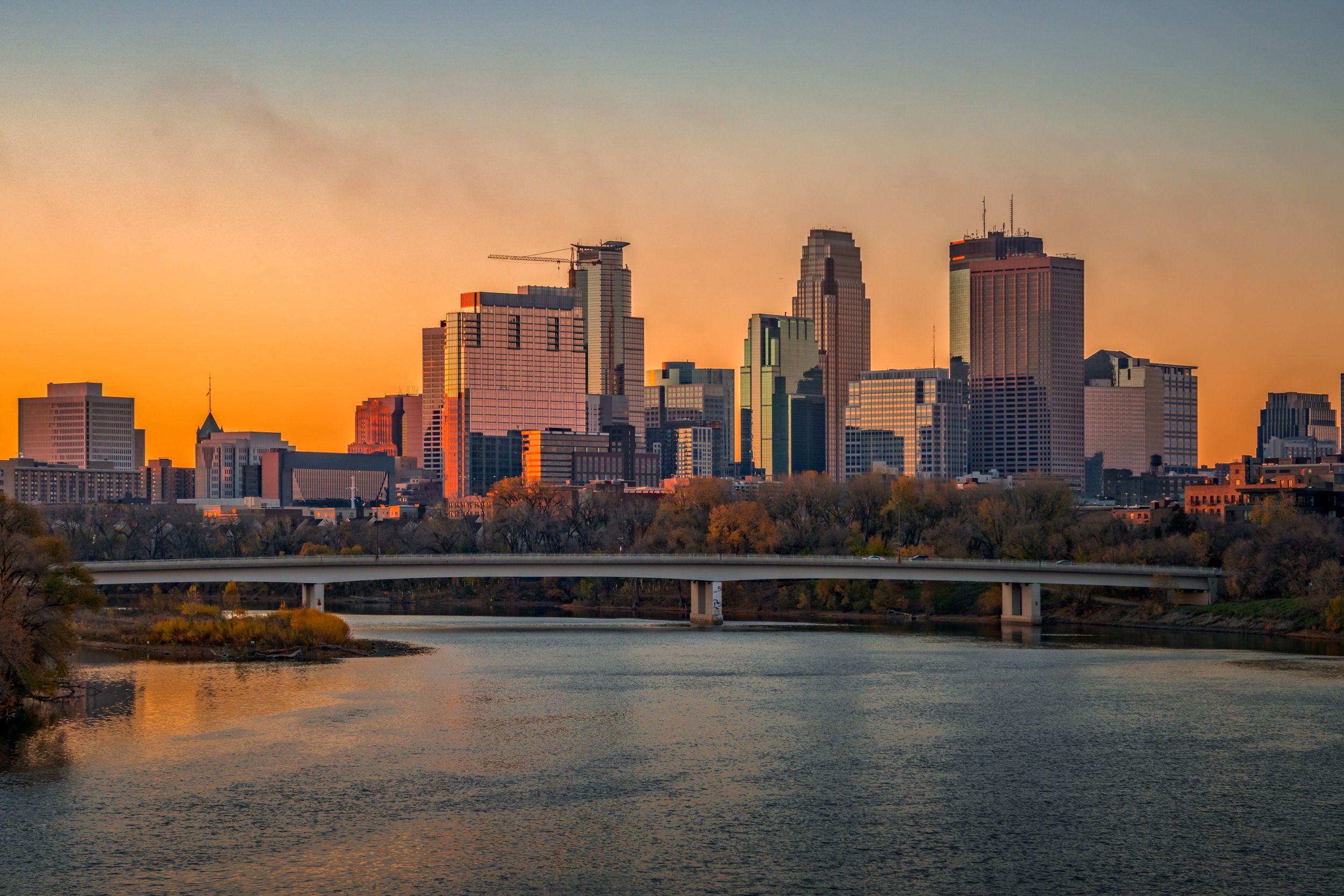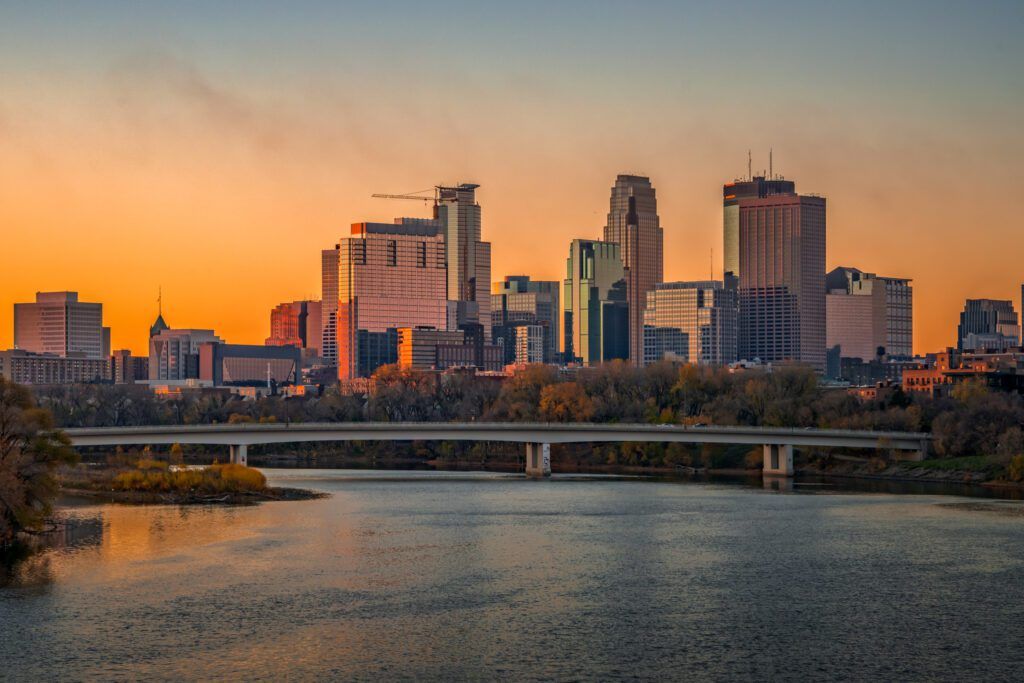The morning is my favorite time of day. Whether you want to get a head-start on your daily tasks, have some personal quiet time, or just witness the beginning of a new day, the morning is the time to do it. As a photographer, the morning is an especially magical time because of the varied light it offers. While the same sequence of light occurs at the end of the day, I find it easier to stay engaged with the moment as I usually have an empty schedule early in the morning when compared to a typical evening.
In this guide, I’m going to offer some tips to maximize early morning light. Most of the tips will focus on efficiently using the morning light, one will be for you as a creative person. I will be covering the following:
- The type of light to expect
- Creating a photography plan
- Get up earlier than you think you should
- Bring neutral density filters
- Step out from behind the camera
Recommended Reading: After learning about camera settings, improve your photographs by understanding how light works! Grab a copy of Photzy’s premium guide: Understanding Light Book One.
The Type of Light to Expect
Depending on the time you arrive at your location, you’ll experience all, or some, of pre-dawn twilight, sunrise, and the morning Golden Hour.
Pre-dawn twilight is essentially a Blue Hour, when the sky is a rich blue, the stars are just beginning to fade, and there is a reddish glow on the horizon where the sun is about to rise. As the sun continues to rise, the glow brightens from red to orange, to yellow. In the spring in the northern hemisphere, if you arrive at the beginning of this period (about an hour before sunrise), there is a good chance to see and photograph the Milky Way.
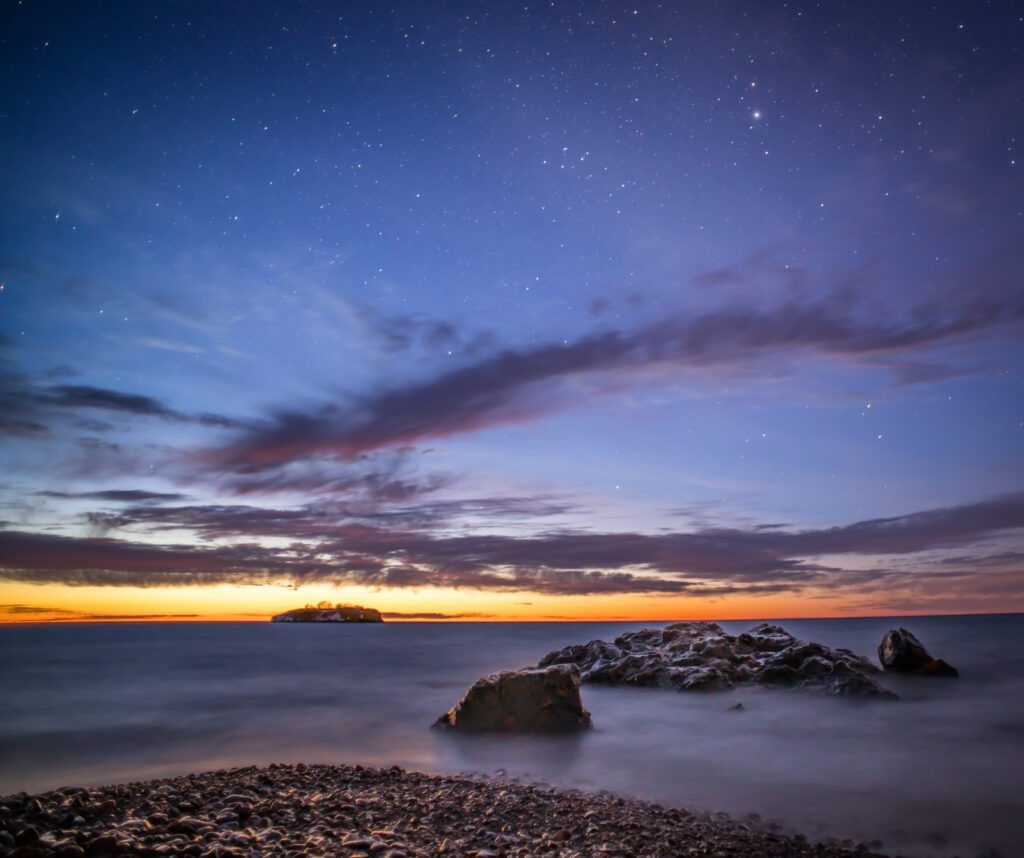
Pre-dawn light with visible stars. Photograph by Tomas Alvarez
We all know what sunrise looks like, but the one thing we can take advantage of is having metered sunlight in our scene as time passes. A small amount of sunlight shining over the horizon can create a lot of different options that aren’t available when the full sun is visible or hidden. Small scenes like a rocky beach or a medium-dense wood can have a sense of mystery with limited light.
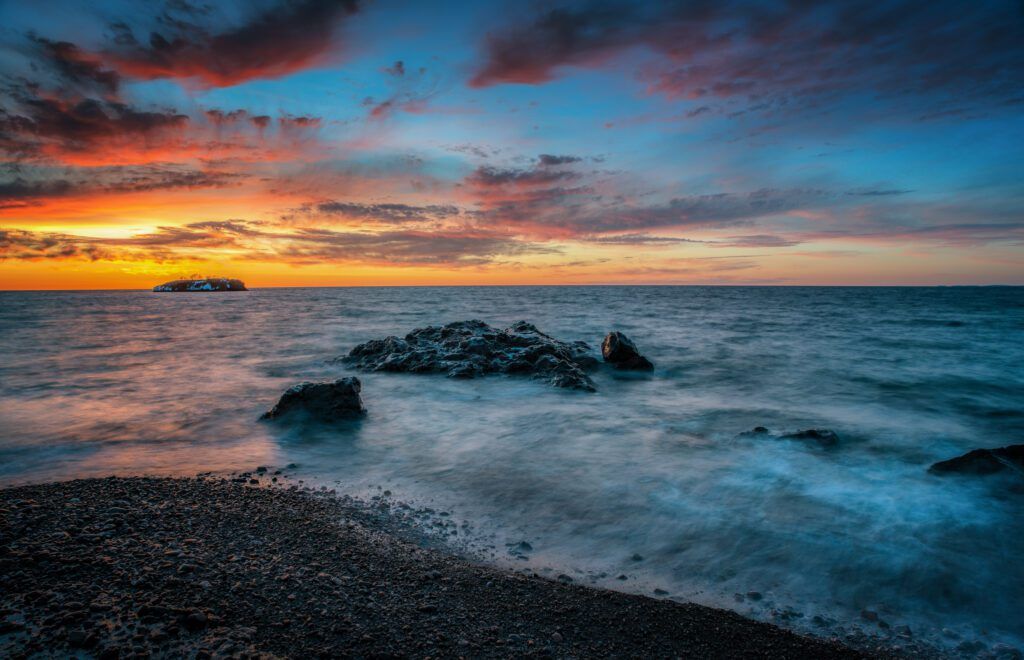
Sunrise. Photograph by Tomas Alvarez
The morning Golden Hour offers the same light as the evening, just in a different direction, but with the bonus of less human activity. Golden Hour visits parks is the best time to go if you are not super-early inclined, especially on a weekday.
Of the types of available light, my favorite is pre-dawn. I love photographing a scene with visible stars and a warm glow on the horizon. It never gets old.
Key Lesson: The morning light varies, but you’ll need to experiment to find the right mix of effort and reward to determine how early to reach your destination. Try arriving an hour before sunrise at least once to experience the pre-dawn twilight.
Creating a Photography Plan
I once went out on a short photography trip with a group of friends. One of my friends had a shot list she created in a spreadsheet and brought it with her. At first, I didn’t know what to think. I wondered if having the shot list impacted serendipitous creativity, the meaning was the organic feeling of exploration and capturing something new lost in the process of planning? Our adventure came and went, and I watched her check off her listed shots as she completed them. For a couple more days, I continued to ponder the impact of structure on creativity.
After a week went by, I realized the genius in the shot list. It was a guide, not a rigid set of controls. There was room for serendipity, but there were shots she didn’t want to forget.
Ever since seeing her execute her list, I’ve incorporated them into some of my outings, especially when I’m in a location that I don’t visit often, or won’t soon return to.
The morning Golden Hour offers the same light as the evening, just in a different direction, but with the bonus of less human activity.
Before I get into what things you can plan for, understand that scouting will be really important. Midday, or when you’re experiencing unfavorable light, scouting will help immensely while not using prime photography light.
Here are some items to consider having in your plan:
- A list of possible subjects – You can have as many as you want, but remember, you’ll have a finite time to get into position for each subject. Create a shooting order so you can work efficiently.
- The location and time of the sun when it rises – This knowledge is critical for planning how to shoot your subjects. You’ll also want to try imagining the morning light and how it will interact with your scene. Remember that sunrise is the time the sun begins to pass the horizon. On a clear day, there will be a large amount of light when compared to fifteen minutes before sunrise.
- Arrival time – Showing up just at sunrise will allow you to create wonderful images, but consider arriving much earlier than sunrise. I’ll cover this more in a little bit.
- Appropriate clothing and gear – There’s nothing worse than finding out while you’re heading to a beautiful location that you forgot an essential item.
While I love the efficiency of a photography plan, I also enjoy allowing the moment to take me in any creative direction presented. Try creating a plan and give it a go. See if it helps you become more productive.
Key Lesson: Scouting and a simple plan will help you ensure a successful photography outing.
Get Up Earlier Than You Think You Should
If you take only a single tip from this guide, take this one. From my experience, I grossly underestimate how long it will take me to accomplish the necessary tasks, and negotiate the inevitable hurdles to be up, ready to go, have my equipment handy, drive, get in position, etc. The list goes on and on, and the time unaccounted. In the moments of brain fog that accompanies waking in the small hours, we will be slow to move, think, and act. We can circumvent these issues by getting up earlier than we think is necessary.
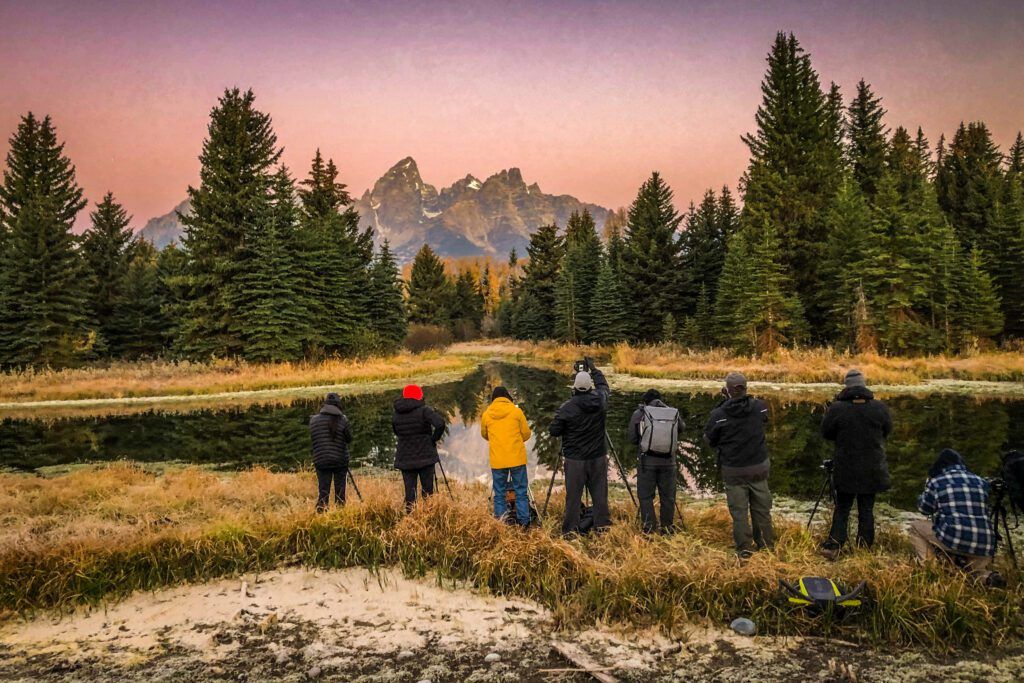
A reason to get up earlier. Photograph by Tomas Alvarez
I can’t count the number of times I’ve arrived at a scene and saw the best light come and go – from the parking lot. Nothing will have a bigger impact on your success in utilizing the morning light than giving yourself enough time to photograph in it.
This advice is even more crucial when you are visiting popular locations. Places like Glacier National Park and Grand Teton National Park are well known for their morning light. When you add small parking lots and other photographers jockeying for the best view, you now have additional issues navigating.
Key Lesson: Get up as early as you can manage. Sometimes it’s hard to predict things that may slow your morning progress.
Bring Neutral Density Filters
While this, at first, may seem counter-intuitive, neutral density (ND) filters will allow you to stretch the time when the sun is partially up. I’ve found, in the moments when the sun has just past the horizon, that the light is bright enough to illuminate the scene, but is too bright and causes additional contrast. Using an ND filter is like pushing the sun’s brightness back a few minutes.
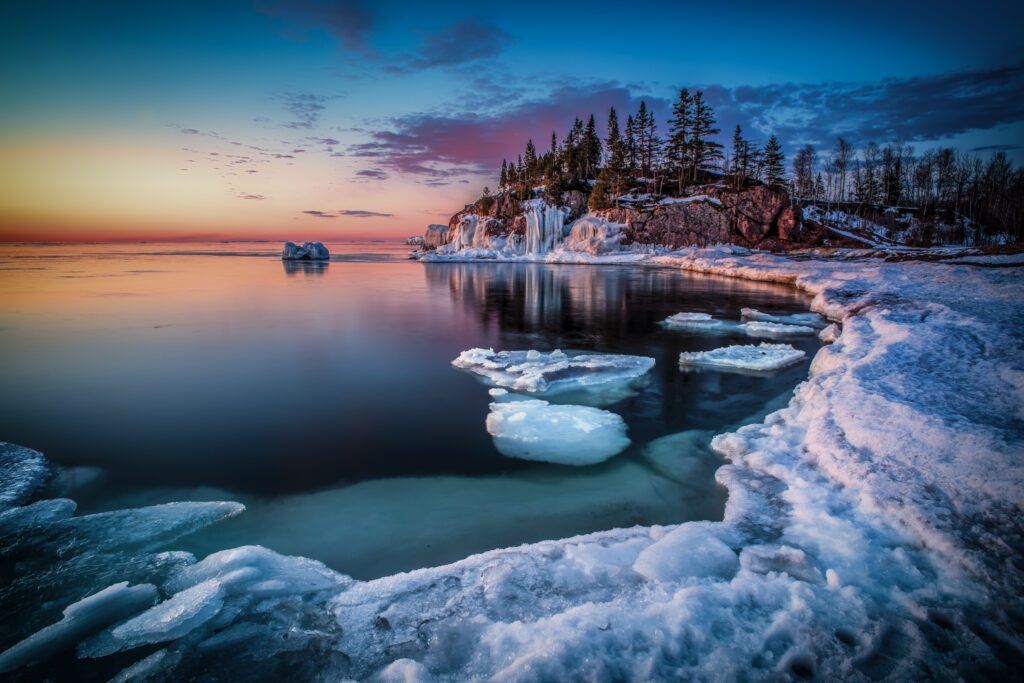
ND Filters buy a little extra time for longer exposures. Photograph by Tomas Alvarez
When you combine the ND filter with a polarizer, you can do amazing things to reduce glare and increase saturation in your scenes – all while having more of your scene list.
When I head out to shoot morning light, I bring my entire long exposure kit, as I never know what I may need at that moment. My kit consists of:
- ND filters
- Circular polarizer
- Filter holder
- Adapter rings
Key Lesson: The light changes rapidly when the sun rises. Having ND filters handy will help you tame the light, buying you more time to create images.
Step Out From Behind the Camera
As photographers, we can become fixated on producing images of a magical moment or location. And while creation is a noble quest, I would argue being present and taking in the scene, light, and calmness the morning offers is good for the soul. Isn’t that why we are out there in the first place?
As photographers, we can become fixated on producing images of a magical moment or location.
Camera breaks are part of my routine now. I make it a point to stop and breathe and look around me. I use that moment to appreciate the effort, time, and sacrifice (usually sleep) it takes to be in that place at that time. Breaks also allow the light to shift and evolve – to the point that every few minutes, the scene looks different.
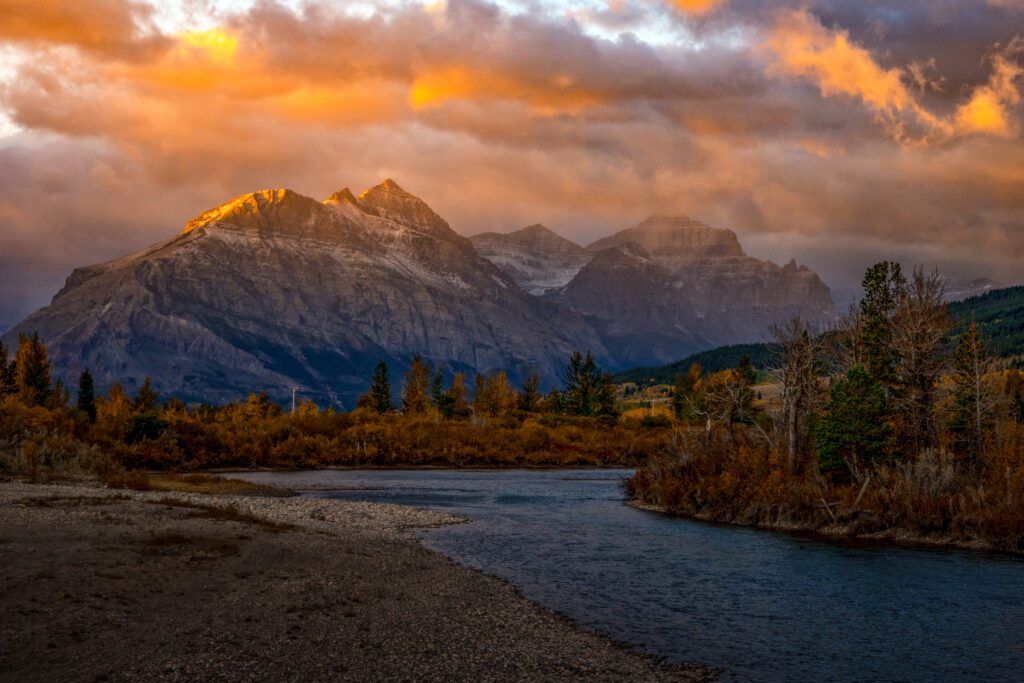
Standing in the glory of morning light, thanking my lucky stars. Photograph by Tomas Alvarez
For me, nothing beats sitting in a beautiful location with a cup of coffee taking at the beginning of the day. These moments are always better with friends or loved ones, but even alone there’s a sense of peace and possibility that comes with dawn. It’s these moments that fill our buckets and allow us to return to a world that is often not as peaceful as we’d like.
Key Lesson: Taking a moment to reflect during the sunrise will do wonders for the soul, and it may give you more emotional energy from which to draw as you create in the morning light.
Recommended Reading: After learning about camera settings, improve your photographs by understanding how light works! Grab a copy of Photzy’s premium guide: Understanding Light Book One.
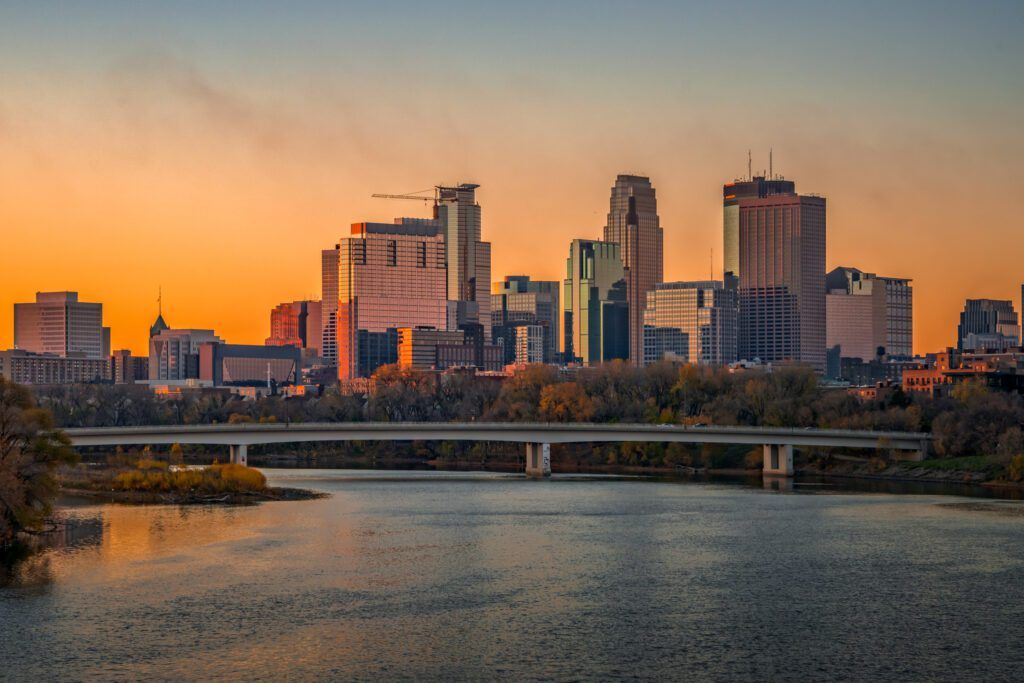
Photograph by Tomas Alvarez
Making the most of the morning light is not a complicated ordeal. You can use the tips like knowing what types of light to expect and creating a plan to simplify your experience. The difficult task is getting out of bed early. Trust me, I know the pain. It may not feel the best at the moment, but there will always be a good payoff. I always have my ND filters handy and will use them in a pinch, and I bet you will find them useful in your morning outings. Be sure, though, to take a moment and reflect on what you are experiencing, and your journey to that point.
Self-Check Quiz:
- What are some places near you that would be good for morning photography?
- Would going earlier than sunrise change the scene?
- If you were to create a shooting plan, what would be the best way for you to write it out, store it, and retrieve it later?
- What things would be on your plan that is different than the list I presented?
- List a couple of your favorite locations to photograph. What time would you need to get out of bed to arrive for the pre-dawn blue hour? Test your theory.
- Have you brought filters, besides ND filters, with you for morning shoots?
- One of the simplest reflections is gratitude. Next time you are out photographing the sunrise, think about five things you are thankful for.


